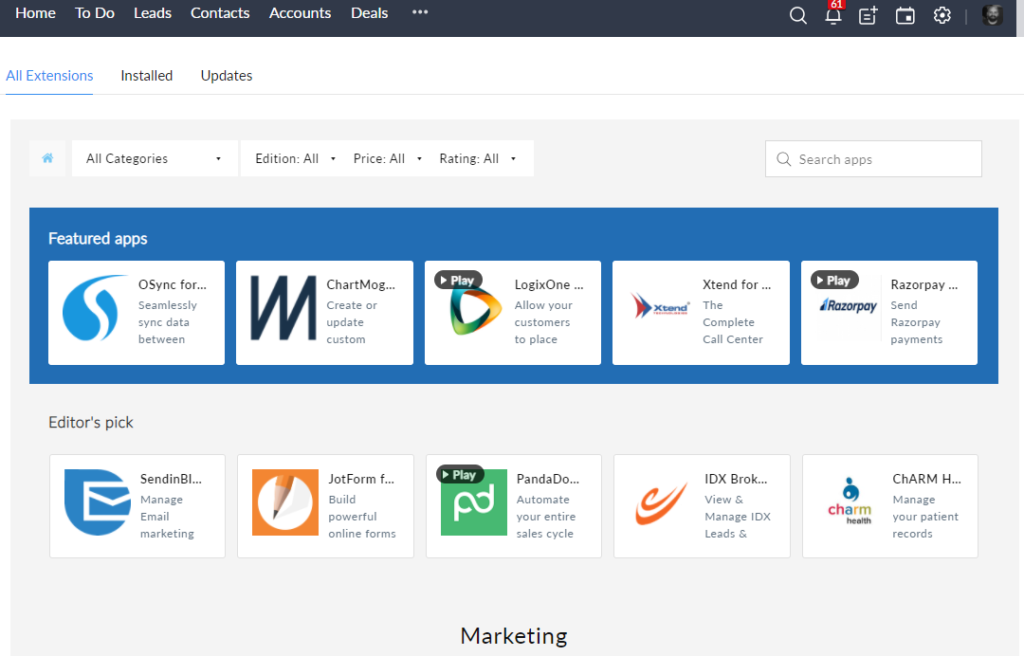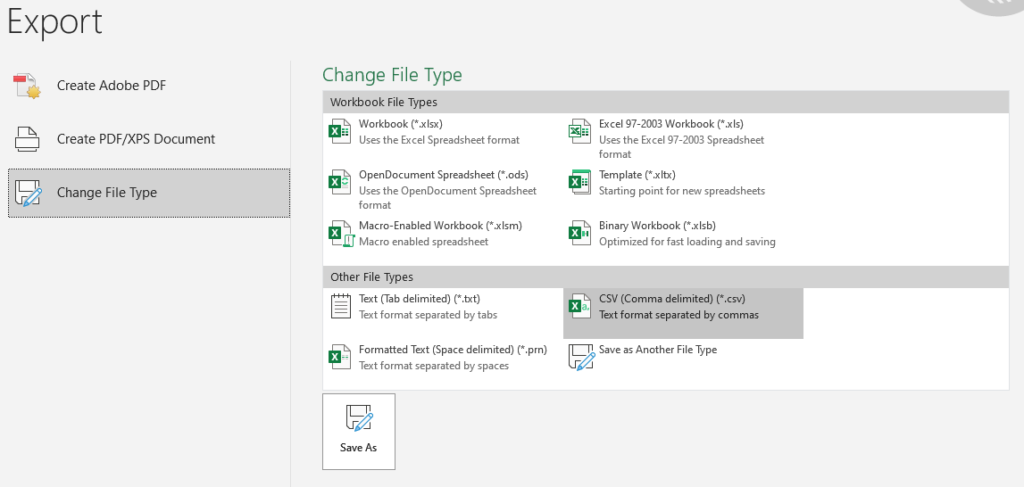It’s common to use Excel spreadsheets to manage information when you start a new business. Spreadsheets may work while the company is small and there isn’t as much customer or financial data to mind, but any growth will quickly lead to cumbersome circumstances.
Pros and Cons of Spreadsheets
Pro: They’re free.
For most businesses, spreadsheet software is usually free and easy to access. Most people with an internet connection can access some kind of spreadsheet software.
Pro: They don’t require much training.
Even if you’ve spent countless hours developing pivot tables, you know that just getting started in Excel or Google Sheets doesn’t require any expertise. Outside of customized formulas, spreadsheet functionality is relatively intuitive, making the software ideal for companies with less time to train new employees.
However, as useful as spreadsheets may be in the early stages of business, these benefits don’t last long. Over time, the disadvantages start to build up and reveal the limits of the software. Even for smaller companies, managing information through spreadsheets isn’t productive.

Con: It’s hard to share spreadsheets internally.
If a company’s sales team is just one person, it’s easy to have one spreadsheet. When that team starts to grow, updating and sharing a single master file becomes a logistical challenge quickly.
Con: It’s easy to share spreadsheets externally.
Unlike a dedicated system that requires its users to log in to access the file, spreadsheets are subject to access by anyone with a quick email. A dishonest employee would have the ability to share customer data with company competitors.
Con: There’s no easy way to tell who is working on what when.
Speaking of logistical nightmares, it’s a challenge to establish an orderly system with spreadsheets. Unless you can train each employee to take careful notes and adhere to a strict documentation process, you won’t know who last reached out to a prospective or current customer. Orchestly by Zoho can help you optimize your business workflow.
Con: Multiple file versions can conflict.
Because of the difficulty with sharing spreadsheets internally, your employees are bound to wind up with multiple versions of the same data. All it takes is one person to forget to update the master file. If you think this is uncommon, you’re wrong; nearly 90 percent of spreadsheets have errors.

How a CRM up the Spreadsheet Slack
Customer relationship management (CRM) is a modern way to manage your company’s interactions and relationships with prospective and current customers. The goal of any good CRM is simple: Improve your business relationships to help you grow your business. With Zoho CRM, you can easily conduct sales meetings and stay ahead of the numbers.
Many CRM tools allow you to strengthen the customer life cycle, improve customer service relations, and optimize your sales plans. You’ll have more time to focus on the essential parts of building your business and winning over new customers.
Five Reasons to Make the Switch
Why make the switch from error-prone spreadsheets to a CRM system?
1. Better lead management
Using Excel to manage your leads can become frustrating quickly because spreadsheets aren’t meant to show vast amounts of data at once. They certainly can hold a lot of information, but you’ll wear out your finger scrolling down to see it all. For that matter, you’ll struggle to try to capture detailed notes in a spreadsheet without losing the information in the cell.
Zoho designs its CRM with lead management in mind, giving it the superior user experience. You can store detailed information about each customer and lead, including:
- Name
- Qualification stage
- Interested products and services
- Communication details
Sales teams will have a clearer view of which customers follow which leads. They can even automate reminders to make sure they don’t forget about following up on a client. Zoho’s custom solutions offer even more flexibility to meet your needs taking into account that every business runs differently.
2. Improved data access and team collaboration
Growing companies that use spreadsheets undoubtedly know how complicated it is to internally share a spreadsheet, especially as more people get involved in a project. Employees may end up working with mismatched versions of the same file where changes don’t log in real-time. Plus, spreadsheets still aren’t easy to edit on a mobile device, limiting on-the-go access.
With a CRM, you can store all critical information in a central location, overcoming the master repository challenge. With Zoho’s self-service analytics software, your company can creating stunning visualizations based on real customer data in a matter of minutes.
3. Integrations
Google Sheets works well with other Google Drive products, and Excel works well with other Microsoft Suite products. However, when it comes to exporting the data to other business systems, spreadsheets tend to be more restrictive than not; this is a significant challenge for businesses that need to import customer data into other systems.

Using a CRM solution removes many of the limits associated with spreadsheets, allowing you to integrate new applications without manually entering the data each time. Email integration is another useful feature Zoho offers, allowing its users to track and view client emails from within the CRM. Your team will have full transparency of all communications with customers, making it easier to catch up on what was said.
4. Better data security
Spreadsheets offer little in the way of security; as long as an employee has an offline copy of the data, it is possible to share that data with people who aren’t supposed to see it. Changing the master spreadsheet’s password won’t help at that point.
Zoho designs its CRMs around security, requiring secure credentials to access data at all times. You have the freedom to set different permissions for various elements, granting access only to employees who need to use them. When an employee leaves the company, you can deactivate their account from an integrated HR suite to ensure they will no longer have access to customer information.
5. Better reporting
Excel spreadsheets can generate reports, charts, and graphs, but they’re high-level visualizations that don’t tell you much. Even if you’re familiar enough with the commands and formulas to extract useful data, Excel doesn’t have real-time accuracy; you have to spend time manually entering the data to produce an accurate update. By the time you finish, new data comes in and makes it outdated.
Most CRMs have reporting capabilities that allow you to analyze real-time data in just a click. Other integrated tools can widen the range of the CRM’s capabilities. For example, Projects lets you efficiently plan and track company projects no matter where your employees are.
Exporting Spreadsheet Data to a CRM
Using a CRM ensures that your contact list is always up-to-date, highlights your best campaign strategies, organizes data in a single central location, and streamlines the company workflow to improve productivity in every area. Best of all, a good CRM will even enhance your clients’ experience, and your clients will start to associate your brand with those pleasant experiences.

When your company is ready to make the move to Zoho CRM, you’ll face a one-time task of exporting your spreadsheet data into the system.
1. Decide on the necessary information.
First, you should make a list of all the information you require in the new CRM system. If you don’t get all the data you want during this one-time task, you’ll need to enter it later manually. Take some time and be sure you haven’t left anything out, particularly if your company currently stores data across multiple spreadsheets or systems.
A non-exhaustive list of important information may include:
- Contact details, including name, address, and level of importance
- Company details, including name, website, and industry
- Order details, including deal amount, close date, and stage (in progress, shipped, delivered)
- Any other relevant information for day-to-day operations
2. Assemble the data.
After making a list, the next step is to put the relevant data in one place. How you achieve this depends on the tools your company uses.
3. Standardize the data.
With all of the data in one place, you can standardize it for Zoho CRM. Some common things to watch out for while formatting your data:
- Make sure there are no data gaps
- Ensure email addresses are valid (common format, no misspellings)
- Put phone numbers and addresses in a common format
- Get rid of duplicate data
- First name and last name in separate columns if they’re used separately
- Correct letter casing
- Ensure countries and other values are in a common format
4. Export the spreadsheet and import into the CRM.
Finally, you can export this standardized data into a CSV file. Zoho CRM will accept the CSV data import and automatically enter it into the system with easy field mapping. If you need help don’t worry we have plenty of other guides and articles covering this process and best practices.
At Zenatta, we’re a proud premium partner with Zoho. This affordable CRM simplifies the workday and optimizes the way you use your data. Have you ever lost time at work fixing spreadsheet errors? Tell us all about your worst experiences wrestling with Excel.









